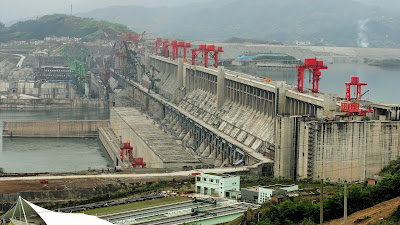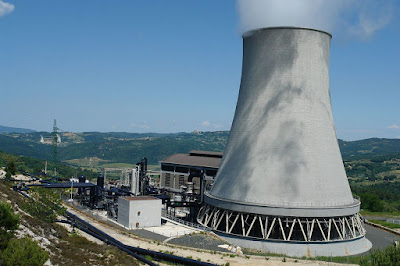Will Renewable Energy Ever Rule The World?
It was 1931 when Thomas Edison said,
" I'd Put My Money On The Sun And Solar Energy.
What a Source Of Power!"
" I hope We Don't Have To Wait Until Oil And Coal Run Out Before We Tackle That!"
(Thomas Al. Edison, 1931)
Renewable Energy:
Renewable Energy is energy that is collected from renewable resources, which are naturally replenished on a human's lifetime.
The most common renewable energies are solar energy, wind energy, hydropower, biomass, geothermal power.
Let Us discuss the most common renewable energies.
1. SOLAR ENERGY:
Solar Energy is the most enormous renewable energy source in the world, solar energy refers to technologies that convert the Sun's heat or light to another form of energy for use. In this process does not emit any greenhouse gases in the energy generation process.
Solar panels are being used by homes, businesses and large scale solar facilities. And a solar technology of all panels is becoming less expensive and more efficient making at more competitive with other technologies.
However, the cost of solar in relation to other fuel sources is a barrier to adoption, but the good news is that the prices are coming down so fast there is been an 85% drop in the price of solar per watt since 2008(GOLDMAN SACHS GLOBAL INVESTMENT RESEARCH).
Nowadays, solar energy is the most useful and enormous energy sources. The electric car is based on the solar energy source which is a remarkable idea.
2. WIND ENERGY:
Wind Energy captures the natural wind in our environment and converts the air's motion into mechanical energy usually for electricity production. The mechanism used to convert air motion into electricity is referred to as a Turbine, a large structure with several spinning blades. These blades are connected to an electromagnetic generator that generates electricity when the wind causes the blades to spin. Wind speeds vary based on Geography, Topography and Season.
Wind energy is the lowest price energy available. Traditionally, this energy was used for milling grain and pumping water, but today it is most commonly used to create electricity. Wind energy is becoming an increasingly important part of the Global electricity supply mix. Wind energy has grown globally by +24% annually on average by facing several challenges(source: Information Energy Agency (IEA)).
A major advantage of wind is that it is a clean and renewable form of energy. There is no direct carbon emissions or air pollutants and does not consume water during the production of electricity. Wind also has relatively low operations and maintenance costs after initial construction.
3. HYDROPOWER:
Hydropower or Hydraulic power refers to the conversion of energy from flowing water into electricity, is considered as a renewable energy source as the water cycle is constantly renewable by the Sun.
Historically, one of the first uses of hydropower was for mechanical millings, such as grinding grains. Today, in modern civilization Hydropower Plants produce electricity using Turbines and Generators, where mechanical energy is created when moving water spins rotors on a Turbine, is connected to an electromagnetic generator, is produced electricity when the Turbine spins.
Hydraulic power is the largest contributor of all renewable energy sources and accounts for +6.7% of worldwide electricity production. Three Gorges Hydropower Pant in China is the world's biggest hydro-based power station. The Itaipu, Brazil & Paraguay power plant with an installed capacity of 14,000 MW ranks as the world's second largest hydro-power plant. Itaipu dam since 1984 has generated more than 2.4 B MWh.
Historically, one of the first uses of hydropower was for mechanical millings, such as grinding grains. Today, in modern civilization Hydropower Plants produce electricity using Turbines and Generators, where mechanical energy is created when moving water spins rotors on a Turbine, is connected to an electromagnetic generator, is produced electricity when the Turbine spins.
Hydraulic power is the largest contributor of all renewable energy sources and accounts for +6.7% of worldwide electricity production. Three Gorges Hydropower Pant in China is the world's biggest hydro-based power station. The Itaipu, Brazil & Paraguay power plant with an installed capacity of 14,000 MW ranks as the world's second largest hydro-power plant. Itaipu dam since 1984 has generated more than 2.4 B MWh.
Hydro-power plants are not completely free of greenhouse gas emissions, as, with most forms of energy, carbon dioxide emissions occur during construction, particularly as a result of the large quantities of cement used, and loss of vegetation in flooded areas creates methane, another greenhouse gas, as it matters decays understand.
4. BIOMASS:
Biomass or Bioenergy refers to the organic materials that are used for the production of energy. Biomass is primarily found in the form of living or recently living plants and biological wastes from industrial and home use, 21% of Brazil's industrial sector is powered by Biomass (source: IEA). Due to the breadth of the term, the composition of biomass is inconsistent, but generally, includes carbon, water and organic volatiles.
For the production of energy from biomass, the term feedstock is used to refer to whatever type of organic material will be used to produce a form of energy. The feedstock must then be converted to a usable energy form through one of may processes.
Feed Stock+Process---> Usable Energy Form.
Nowadays, biomass makes up only a small percentage of the total world energy used, for approximately, 2.5 billion people it remains the primary sources of energy for cooking and heating.
The environment benefits and costs are highly contextual depending on the technology and feedstock used. While some biomass processes such as waste-to-energy are mediate for their lower co2 emissions, some processes such as combustion, release co2 and particulate matter that is a significant concern for human health.
5. GEOTHERMAL POWER :
Geothermal Energy refers to the production of energy using the internal heat of the Earth's crust, this heat comes from the radioactive decay of minerals and continual heat loss from the Earth' Core. If managed appropriately, geothermal is a renewable and sustainable form of energy as it produces electricity using the natural heat from the Earth.
Geothermal technology can only be used in locations with specific geologic conditions. Heat and power plants can found in Iceland, Indonesia, New Zealand, Hawaii, California and Ecuador. In these regions, it can make up a significant portion of the power and heating sectors- for example, over 90% of space heating and over 27% of electricity in Iceland is sourced from geothermal energy.
In 2007, global geothermal power generation stood at an estimation 84.8 TWh, while the increasing capacity reached 14 GW global geothermal power capacity is expected to rise to just over 17 GW by 2023, with the biggest capacity additions expected in Indonesia, Kenya, Philippines and Turkey (source: Renewable 2018).
CONCLUSION :
In conclusion, Renewables will have the fastest growth in the electricity sector, providing almost 30% of power demand in 2023, up from 24% in 2017(source: International Energy Agency). During this period, renewables are predicted to meet more than 70% of global electricity generation growth led by solar PV and followed by wind, hydropower and bioenergy. Hydropower remains the largest demand by 2023, followed by wind(6%), solar PV(4%) and bioenergy(3%).
By 2040, 37% of power generation is expected to come from Renewables.
That's compared to 24% today(source: IEA).
Followed by the above information we can say that We will soon get a new world of Renewable Energy Sources.







Comments
Post a Comment